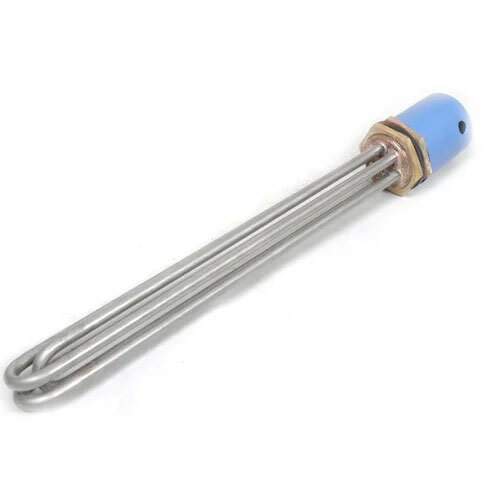In-Line Heater
In-Line Heater Trade Information
- Minimum Order Quantity
- 5 Nos
- Supply Ability
- 1000 Per Week
- Delivery Time
- 7 Days
- Main Export Market(s)
- Asia, Australia, Central America, North America, South America, Eastern Europe, Western Europe, Middle East
- Main Domestic Market
- All India, South India, Central India, West India, North India, East India, Karnataka, Kerala, Gujarat, Lakshadweep, Mizoram, Meghalaya, Manipur, Andhra Pradesh, Bihar, Chandigarh, Daman and Diu, Goa, Jharkhand, Odisha, Punjab, Assam, Delhi, Dadra and Nagar Haveli, Andaman and Nicobar Islands, Arunachal Pradesh, Chhattisgarh, Haryana, Himachal Pradesh, Jammu and Kashmir, Madhya Pradesh, Tamil Nadu, Maharashtra, Nagaland, Uttarakhand, West Bengal, Rajasthan, Sikkim, Telangana, Tripura, Pondicherry, Uttar Pradesh
About In-Line Heater
An in-line heater is a type of electric heating device designed to heat fluids (liquids or gases) as they flow through a pipe or tube. These heaters are installed directly into the pipeline, allowing the fluid to be heated as it passes through the heating element. In-line heaters are known for their efficiency, compact design, and ability to provide precise temperature control.
In-line heaters typically consist of a heating element housed within a tubular chamber, with inlet and outlet ports for the fluid. The fluid enters the chamber, is heated by the immersed element, and then exits at the desired temperature. These heaters are commonly used in applications where continuous heating of fluids is required, such as in water heating, oil preheating, fuel heating, steam generation, and process heating in various industries.
Due to their design, in-line heaters can be used in both low-flow and high-flow systems, and they are available in various materials, wattages, and configurations to suit different applications. They are particularly useful in situations where space is limited, and direct heating of the fluid is necessary.
FAQs About In-Line Heaters
1. What is an in-line heater used for?
- In-line heaters are used to heat fluids (liquids or gases) as they flow through a pipeline. They are commonly employed in applications such as water heating, fuel oil preheating, steam generation, and maintaining process temperatures in industrial systems.
2. How does an in-line heater work?
- The heater is installed directly into the pipeline, where the fluid flows through a heating chamber. The heating element inside the chamber warms the fluid as it passes through, ensuring consistent and precise temperature control.
3. What industries use in-line heaters?
- In-line heaters are used across various industries, including oil and gas, chemical processing, food and beverage, pharmaceuticals, HVAC, and power generation. They are particularly valuable in processes requiring continuous and controlled fluid heating.
4. What materials are in-line heaters made from?
- In-line heaters are typically made from materials such as stainless steel, Incoloy, or other corrosion-resistant alloys, depending on the fluid being heated and the operating environment. The material choice ensures durability and longevity in various applications.
5. Can in-line heaters be customized?
- Yes, in-line heaters can be customized in terms of size, wattage, voltage, materials, and configuration to meet the specific needs of different applications. Customization ensures optimal performance and compatibility with the existing system.

- Minimum Order Quantity
- 5 Nos
- Supply Ability
- 1000 Per Week
- Delivery Time
- 7 Days
- Main Domestic Market
- All India, South India, Central India, West India, North India, East India, Karnataka, Kerala, Gujarat, Lakshadweep, Mizoram, Meghalaya, Manipur, Andhra Pradesh, Bihar, Chandigarh, Daman and Diu, Goa, Jharkhand, Odisha, Punjab, Assam, Delhi, Dadra and Nagar Haveli, Andaman and Nicobar Islands, Arunachal Pradesh, Chhattisgarh, Haryana, Himachal Pradesh, Jammu and Kashmir, Madhya Pradesh, Tamil Nadu, Maharashtra, Nagaland, Uttarakhand, West Bengal, Rajasthan, Sikkim, Telangana, Tripura, Pondicherry, Uttar Pradesh
- Main Export Market(s)
- Asia, Australia, Central America, North America, South America, Eastern Europe, Western Europe, Middle East

Price:
- 50
- 100
- 200
- 250
- 500
- 1000+






 Send Inquiry
Send Inquiry Send SMS
Send SMS
